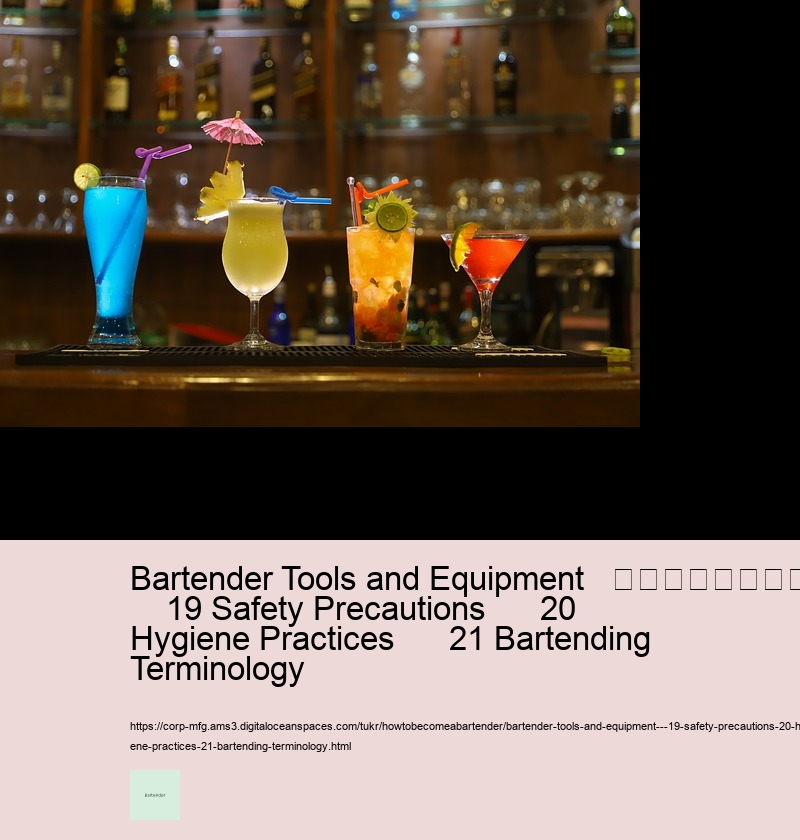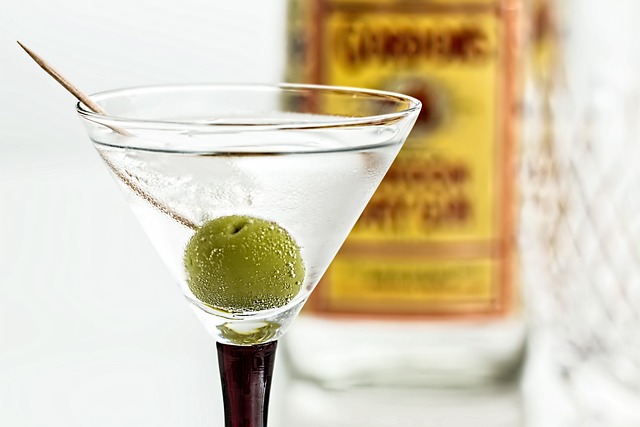As a bartender, it's important to keep your bar station organized and efficient. (There are) several tools and equipment that can help you do this. One of the most important is 19 safety precautions such as wearing gloves when handling food or drinks and using the proper protective gear while operating machinery. Additionally, having a good hygiene practice like washing your hands regularly and sanitizing the workspace often can help you avoid potential risks. Moreover, knowing basic bartending terminology like different types of cocktails and pouring techniques can make you more effective in serving customers!
Another essential tool for keeping your bar station organized is an inventory system. This should include tracking stock levels, keeping track of what needs to be restocked, and ensuring all orders are accurate. You should also have a system in place to monitor cash flow and credit card transactions. And don't forget about organizing the menu! By having an easy-to-read menu with all available items listed clearly, customers will appreciate being able to quickly find what they're looking for.
Lastly, it's important to think about how you want to organize your bar station layout. Having a designated area for each type of drinkware or ingredient keeps everything neat and tidy during busy periods, allowing you to serve customers quicker! Also consider incorporating shelving units or pegboard hooks for storing bottles and tools so they're easily accessible but out of the way when not in use.
Overall, there are many ways to ensure that your bar station remains organized and efficient at all times.(By utilizing these tips)you'll be able to provide better service for your customers while maintaining a safe working environment!
Bartender tools and equipment can be dangerous if handled improperly. So, it is important for all bartenders to take (19) safety precautions when handling them. Firstly, they should always wear protective gear such as gloves and aprons. Secondly, the bar area should be kept clean and free of clutter to avoid accidents. Thirdly, all electrical tools must be inspected before use and must not be used near combustible materials. Fourthly, sharp edges must be covered or taped to prevent cuts. Fifthly, any spilled liquids must be cleaned up immediately to reduce the risk of slipping or falling.
Additionally, a bartender must also practice (20) good hygiene practices when dealing with customers' drinks and glasses. This includes washing their hands regularly with soap and water before handling any drinkware or alcohol bottles. They should also sanitize surfaces often and never share glassware between customers without first properly cleaning them in hot soapy water. Furthermore, a bartender should always make sure that their work station is stocked with clean rags and towels at all times for quick cleanups of spills or messes that may occur during service hours!
Finally, all bartenders should familiarize themselves with (21) basic terms related to bartending such as mixing techniques, types of liquors as well as cocktail recipes in order to better serve their customers safely and efficiently. By learning these terms bartenders will have more confidence while making drinks thus increasing customer satisfaction! All in all following these safety protocols when using bartender tools & equipment will help ensure a safe environment for both workers & customers alike!
As a bartender, having the right tools and equipment is essential for success. However, it is also important to maintain cleanliness in the workplace by following certain hygiene practices (like washing hands frequently). It's also critical to know about safety precautions that should be taken on a daily basis.
First of all, you should always wear protective gloves when handling food or beverages, as well as during cleaning operations. Additionally, ensure that surfaces are regularly disinfected and sanitized. Secondly, make sure that any utensils used are washed thoroughly after each use with hot water and soap. Keep spilled liquids wiped up immediately and dispose of rubbish regularly! Lastly, familiarize yourself with 21 bartending terminology terms so you can communicate effectively with customers and other staff members.
Overall, having the correct tools and equipment is only half of the job - it's equally important to maintain cleanliness in the workplace by following good hygiene practices and safety precautions! This will help create an enjoyable environment for both you and your customers alike!
As a bartender, having the right tools and equipment is essential. Not only does it make things more efficient and easier for you to do your job, but it also ensures that your customers are safe and can enjoy their drinks without worry. (In addition,) one must also be aware of 19 safety precautions and 20 hygiene practices when working behind the bar. Finally, having knowledge of 21 bartending terminology used in English-speaking countries is key!
For starters, having the appropriate glassware is important; this includes wine glasses, highball glasses, martini glasses, shot glasses, etc. Also necessary are base spirits such as vodka, tequila, gin and whiskey. Cocktail shakers (and) strainers are needed for making certain drinks like margaritas or mojitos. Utensils like spoons and jiggers help measure out ingredients precisely. And lastly don't forget ice buckets for storing ice cubes or crushed ice!
But beyond these physical items there are other essential elements needed to work safely at a bar. You should always have a pouch with basic medical supplies like bandaids or antibiotic ointment in case of any injuries (or) accidents occur while serving guests. It's also crucial to be aware of potential fire hazards such as exposed wires or faulty outlets so they can be avoided to prevent any incidents from happening! Additionally, knowing how to properly handle sharp objects like knives or bottle openers will keep both yourself and your patrons safe from harm's way.
Finally, being mindful about hygiene practices is an imperative part of working at a bar! This means regularly washing hands between tasks to avoid cross contamination as well as cleaning up spills promptly after they happen with proper disinfectant solutions. When handling food items you must wear gloves too ensure no germs get transferred onto them either! As far as bartending terminology goes there are many terms used by professionals including 'shaken not stirred', 'neat' , 'on the rocks' , etc; understanding what these mean will help create better experiences for customers who come into your establishment!
All in all bartending requires one to have knowledge about various tools & equipment along with safety & hygiene measures; additionally learning some popular lingo associated with the profession will make sure that each guest gets served properly and leaves happy!.






